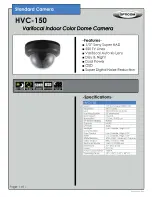
Manual
VEK S4
28
03/09
FEIG ELECTRONIC GmbH
Logic module 1
Logic module 2
Parallel counting
Signals
Direction A
4+2 Counter
Direction logic
Direction B
Direction A
Direction B
4 Counter
allocation
Loop allocation
adjustable
10.5 Direction recognition (4Ch)
In addition to the simple direction recognition present in the classification modules, the VEK S4 detector has
two parameterisable logic modules for the direction-dependent recording of vehicles. Complex evaluation
algorithms using double loops are integrated in the detector. The direction logic generates logical output
signals which can be output via a hardware output or via an interface depending on the setting. The logic
signals are also counted in parallel in the detector independently.
Two direction logic modules each with 2 inputs (double loops) and 2 outputs (directions A and B) are
integrated in the detector. The assignment of the loops to the logical inputs and the assignment of the logical
outputs to the Open Drain outputs can be adjusted.
The assignment meters can be invoked via the interface. For counting in time intervals, the counting result
must be determined from the meter readings at the start and at the end of the time interval. It must be noted
that the counters roll over at 65535 (2
16
) and restart from 0. It is not recommended to reset the counters
otherwise vehicles can be lost at the time of the reset. The counters in the detector are not protected against
power failure. The detectors must either be buffered with a UPS system or the counter readings must be
regularly read and stored in the higher level system for long-term counting.
In addition to the double loop counting, a four loop counting which counts parallel passages is integrated. If
needed, the total count can be corrected by the assumed lane-changers in the superordinate system using
these count values.
Depending on the application, several different evaluation logics can be set for each of the four logical
outputs. The different logics for the direction recognition are shown briefly below. The detailed method of
working for different traffic situations follows afterwards.









































